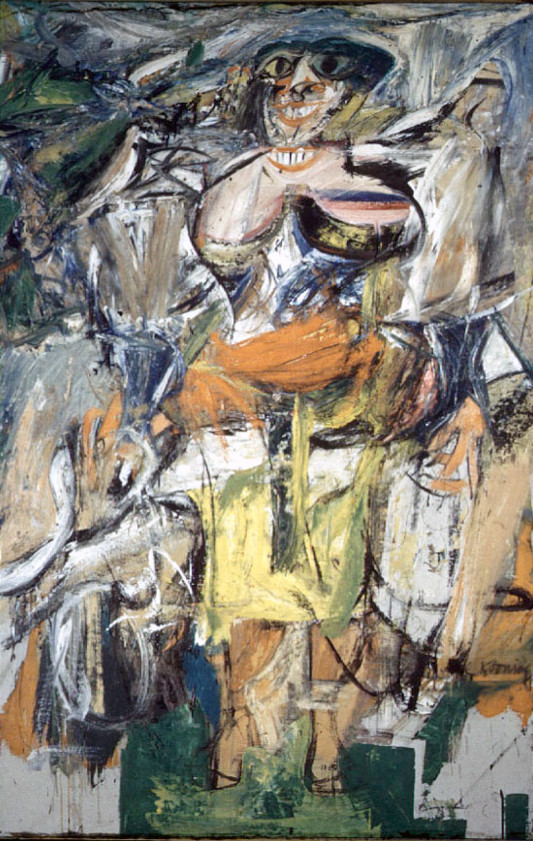Zilczer on De Kooning
Nice review by Jackie Wullschlager in the FT (26-7 April 2014) about a new monograph by Judith Zilczer on painter Willem (Bill) de Kooning's life and work.
I have always found his 'Woman' series challenging. Apparently they almost didn't happen but an 'extraordinarily fortunate' visit to his studio by a critic saved what was to become the first of his enrage' series from the dustcart.
He had a colourful life. In love with Westerns he stowed away on a freighter in 1926 from Rotterdam to go to the US and eventually, through his friendship with Arshile Gorky, became part of that amazing New York post-war painting scene.
The book gives a lovely anecdote that sort of sums up the best and worst of those times - as told by Robert Rauschenberg: at a party in Franz Kline's over-warm apartment Jackson Pollock 'looked at this guy and said, 'You need a little more air' and ... punched a window out with his fist."
His breakthrough painting, 'Attic' was initially to be called 'Interior' but his wife Elaine insisted that, 'No husband of mine is going to call a painting 'Interior'.
Later he moved up to the swanky East Hampton end of Long Island and made landscapes with 'undulating colour chords'.
(See here for a slideshow of his house which was not far from that 'snapped up' by Cindy Sherman for $4.65m in 2011.)
Kooning defined painting as - 'a way of life, a style of living ... It is exactly in its uselessness that it is free.'
(Although clearly to be able to 'snap up' a house at Springs in the Hamptons it was clearly neither that 'useless' nor that 'free'.)
Emile Zola defined art as 'a corner of nature seen through a temperament'. Zilczer suggests De Kooning's art did the opposite: his mission was 'to create visions of a temperament seen through nature.' This he did for a career spanning 60 years.
The book's called A Way of Living:The Art of Willem de Kooning (Phaidon) and sells for £60/$100.
Update 9th May
For an interesting analysis of the way art auctions work as very imperfect markets see this excellent article by John Gapper in the Financial Times.

